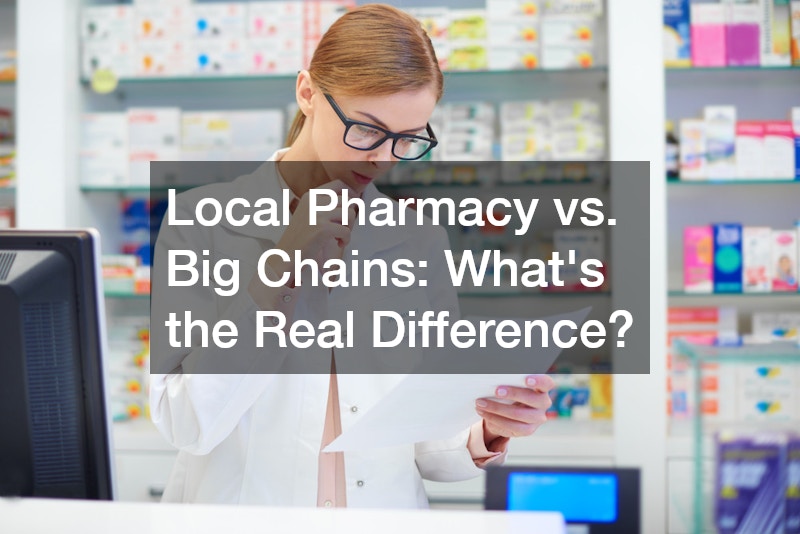
In a world where healthcare and accessibility are of utmost importance, the choice between a local pharmacy and big chain pharmacies can be pivotal for many consumers. This article delves into the distinctive aspects of each, helping readers understand the differences and make informed decisions.
Local pharmacies often excel at providing a personalized service experience, where pharmacists are more likely to know their customers by name and understand their individual health needs. This personal touch can create a trusted relationship that encourages customers to feel valued and heard.
Video Source
These smaller establishments tend to foster strong community ties, contributing to a warmer and more welcoming atmosphere than larger chains. Customers often appreciate the ability to have direct and meaningful conversations with staff who are intimately familiar with the inventory.
However, the level of personalization at local pharmacies can sometimes come at the expense of efficiency, with longer wait times for prescription fills. Nonetheless, many consumers find the trade-off worthwhile for the enhanced service they receive, which stands in stark contrast to the more transactional nature of big chains.
Big chain pharmacies are often praised for their efficiency and the streamlined experience they offer, largely due to their robust staffing and advanced technological systems. However, this efficiency can sometimes lead to a more impersonal service, where customers might feel like just another face in the crowd.
The sheer volume of customers that chain pharmacies handle daily can impact the depth of employee interactions, often prioritizing speed over personal connection. This fast-paced environment may benefit those who need minimal interaction and a quick service turnaround.
Chain pharmacies may provide a dependable and predictable experience, though some customers may miss the personalized advice and attention to detail often found in mom-and-pop shops. Despite this, these large-scale operations maintain a high level of consistency in their service delivery, which is comforting for many consumers.
Big chain pharmacies typically have the advantage when it comes to offering discounts and accommodating extensive insurance coverage. Economies of scale allow these corporations to negotiate lower prices with suppliers, resulting in competitive pricing for their customers.
Insurance compatibility and acceptance is another area where chain pharmacies shine, often providing customers with more seamless payment experiences. The streamlined processes can significantly lower out-of-pocket costs, making medication more affordable for individuals covered by insurance plans.
While the pricing at local pharmacies may not always compete with big chains, they often strive to offer unique discounts and loyalty programs to their customer base. These programs can prove beneficial for those looking to support local businesses while managing their healthcare expenses strategically.
Price transparency is a significant advantage of shopping at local pharmacies, where pricing tends to be more straightforward and devoid of unexpected costs. Customers can often directly communicate with pharmacy staff to understand pricing, fees, and any additional charges upfront.
In contrast, big chain pharmacies might sometimes mask the full cost of products through complex pricing systems and hidden fees, leaving customers surprised at the final checkout counter. These additional costs might offset the perceived savings initially advertised by the chains.
Big chain pharmacies boast a more extensive range of products, largely due to their ability to stock a higher volume of widely used items. While they cater to a broad customer base, they might not carry specialized or hard-to-find products that some consumers require.
Local pharmacies, on the other hand, often focus on providing unique or specialized stock, fulfilling niche needs that might be overlooked by their larger counterparts. They can offer personalized consultations to source the specific product requests of their customers.
The robust supply chains managed by big pharmacies ensure that medicines and products are more widely available across numerous locations, enhancing accessibility for consumers. These efficient logistics systems enable chains to maintain steady stock levels and minimize product shortages.
For consumers who prioritize convenience, the widespread presence of chain pharmacies might outweigh the specialized service offered by local stores. With consistent product availability and multiple locations, chain stores cater to on-the-go individuals needing quick, reliable service.
The choice between local and big chain pharmacies hinges on multiple factors including customer service, pricing, and product availability. By weighing these elements, consumers can opt for the buying experience that best suits their needs, ensuring both convenience and satisfaction.
